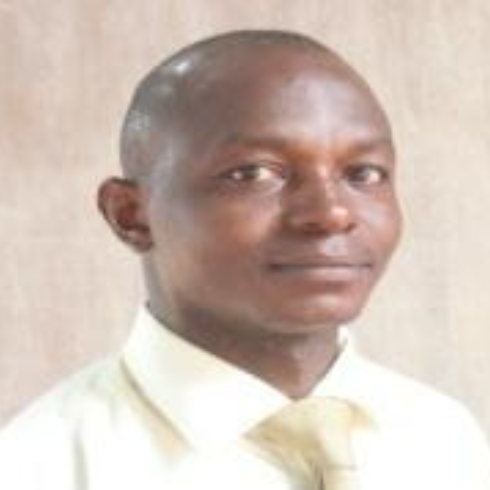International Journal of Image, Graphics and Signal Processing (IJIGSP)
IJIGSP Vol. 14, No. 6, 8 Dec. 2022
Cover page and Table of Contents: PDF (size: 503KB)
Empirical Rain-based Attenuation Quantification and Impact Analysis on 5G New Radio Networks at 3.5GHz Broadband Frequency
Full Text (PDF, 503KB), PP.47-58
Views: 0 Downloads: 0
Author(s)
Index Terms
Rain depth, Heavy rain, very heavy rain, Extreme heavy rain, Rain Intensity, Specific attenuation level, New Radio Networks.
Abstract
Today, rain remains one key and well-known natural phenomenon that offsets and attenuates the propagated radio, microwave, and millimeter-wave signals at different transmission frequencies and wavelengths over propagation paths. Specialised rain attenuation studies can be utilized to analyze their stochastic behavior on propagated radio signals and also come up with appropriate rain attenuation model for network application planning and optimisations. In this contribution, empirical rainfall depths data has been acquired, effectively categorized, and employed to examine the implicative intensity level trends over a ten years period, starting from 2011 to 2020. More importantly, the Recommendation ITU-R P.1511 power-based model combined with the acquired categorized rainfall depths data has been explored to prognostically estimate and quantity the amount of specific attenuation loss due over 3.5G transmission frequency. The results reveal that the level of attenuation attained versus 0.01% percentage of time depends on the type of rain intensity levels (heavy rain, very heavy rain, extremely heavy rain), which in turn is dependent upon rain depth or rate drop sizes. As a case in point, 0.001 percent of the time due to heavy rain, the amount of specific attenuation attained stood at 2dB, while for very heavy and extremely heavy rain, the specific attenuation levels amount to 2.3dB and 4dB respectively. These different amounts of specific attenuation simplify imply that the heavier the rain, the more scattering, and absorption the propagated electromagnetic signals undergo, thus leading to degraded and higher attenuation levels. The empirical based-rain attenuation quantification and impact analysis method explored in this paper will significantly provide radio network engineers with the best way to monitor and evaluate the radio attenuation effect over a propagation channel.
Cite This Paper
Ibrahim Habibat Ojochogwu, Isabona Joseph, Ituabhor Odesanya, "Empirical Rain-based Attenuation Quantification and Impact Analysis on 5G New Radio Networks at 3.5GHz Broadband Frequency", International Journal of Image, Graphics and Signal Processing(IJIGSP), Vol.14, No.6, pp. 47-58, 2022. DOI:10.5815/ijigsp.2022.06.04
Reference
[1]J. Isabona, and A.L Imoize, Terrain-based adaption of propagation model loss parameters using non-linear square regression, Journal of Engineering and Applied Science , 68, 33 (2021).
[2]J. Isabona, and S. Azi, Measurement, Modeling and Analysis of Received Signal Strength at 800MHz and 1900MHz in Antenna Beam Tilt Cellular Mobile Environment, Elixir Comp. Sci. & Engg. 54 (2013) 12300-12303.
[3]J. Isabona, Wavelet Generalized Regression Neural Network Approach for Robust Field Strength Prediction, Wireless Personal Communication 114, 3635–3653 (2020). https://doi.org/10.1007/s11277-020-07550-5.
[4]V.C Ebhota, Isabona, J, and Srivastava, V.M. (2019), Environment-Adaptation Based Hybrid Neural Network Predictor for Signal Propagation Loss, Prediction in Cluttered and Open Urban Microcells, Wireless Personal Communications, Vol. 104 (3), pp. 935–948.
[5]I. Shayea; Rahman, T.A.; Azmi, M.H.; Islam, M.R. Real measurement study for rain rate and rain attenuation conducted over 26 GHz microwave 5G link system in Malaysia. IEEE Access 2018, 6, 19044–19064.
[6]P.Sharma,Hudiara, I.; Singh, M. Measurement of rain induced attenuation over a line-of-sight link operating at 28.75 GHz at Amritsar (INDIA). J. Infrared Millim. Terahertz Waves 2009, 30, 908–914.
[7]M. Ekpenyong, Umoren E and Isabona, J. (2009). ‘‘Rain Attenuation Model for predicting Fading Effect on Wireless Communication Systems in the Tropics’’, Nigerian Journal of Space Research, vol.6, pp.21-32.
[8]F. Moupfouma, Improvement of a rain attenuation prediction method for terrestrial microwave links. IEEE Trans. Antennas Propag. 1984, 32, 1368–1372.
[9]J. Goddard, Thurai, M. Radar-derived path reduction factors for terrestrial systems. In Proceedings of the Tenth International Conference on Antennas and Propagation (Conf. Publ. No. 436), Edinburgh, UK, 14–17 April 1997; IET: Edinburgh, UK, 1997; Vol. 2, pp. 218–221.
[10]I, Shayea, Rahman, T.A.; Azmi, M.H.; Islam, M.R. Real measurement study for rain rate and rain attenuation conducted over 26 GHz microwave 5G link system in Malaysia. IEEE Access 2018, 6, 19044–19064.
[11]A. Abdulrahman, Rahman, T.; Rahim, S.; Islam, M.U. Empirically derived path reduction factor for terrestrial microwave links operating at 15 GHz in Peninsula Malaysia. J. Electromagn. Waves Appl. 2011, 25, 23–37.
[12]C. Capsoni, Fedi, F.; Paraboni, A. A comprehensive meteorologically oriented methodology for the prediction of wave propagation parameters in telecommunication applications beyond 10 GHz. Radio Sci. 1987, 22, 387–393.
[13]A.M. Al-Saman, Cheffena, M.; Mohamed, M.; Azmi, M.H.; Ai, Y. Statistical Analysis of Rain at Millimeter Waves in Tropical Area. IEEE Access 2020, 8, 51044–51061.
[14]W.G.Kang, Kim, T.H.; Park, S.W.; Lee, I.Y.; Pack, J.K. Modeling of Effective Path-Length Based on Rain Cell Statistics for Total Attenuation Prediction in Satellite Link. IEEE Commun. Lett. 2018, 22, 2483–2486.
[15]A.A.H. Budalal, Islam, R.M.; Abdullah, K.; Rahman, T.A. Modification of Distance Factor in Rain Attenuation Prediction for Short Range Millimetre-wave Links. IEEE Antennas Wirel. Propag. Lett. 2020.
[16]R. Singh, Acharya, R. Development of a new global model for estimating one-minute rainfall rate. IEEE Trans. Geosci. Remote Sens. 2018, 56, 6462–6468.
[17]T. Kashiwao, Nakayama, K.; Ando, S.; Ikeda, K.; Lee, M.; Bahadori, A. A neural network-based local rainfall prediction system using meteorological data on the Internet: A case study using data from the Japan Meteorological Agency. Appl. Soft Comput. 2017, 56, 317–330.
[18]M.C. Kestwal, Joshi, S.; Garia, L.S. Prediction of Rain Attenuation and Impact of Rain in Wave Propagation at Microwave Frequency for Tropical Region (Uttarakhand, India). Int. J. Microw. Sci. Technol. 2014, 2014, 1–6.
[19]L. Mello, Pontes, M.S. Unified method for the prediction of rain attenuation in satellite and terrestrial links. J. Microw. Optoelectron. Electromagn. Appl. 2012, 11, 1–14.
[20]Singh, H.; Kumar, V.; Saxena, K.; Boncho, B.; Prasad, R. Proposed Model for Radio Wave Attenuation due to Rain (RWAR). Wirel. Pers. Commun. 2020, 115, 791–807.
[21]Ashidi, A.G., Ojo, J.S., Ajayi, O.J. et al. Evaluation of Concurrent Variation in Rain Specific Attenuation and Tropospheric Amplitude Scintillation Over Akure, Southwest Nigeria. Earth Syst Environ 5, 547–559 (2021). https://doi.org/10.1007/s41748-021-00225-6
[22]T. V. Omotosho, C. O. Oluwafemi, “One-minute rain rate distribution in Nigeria derived from TRMM satellite data,” J. Atmos. Solar-Terrestrial Phys., vol. 71, no. 5, pp. 625–633, 2009.
[23]G. Ajayi and E.B.C. Ofoche: "Some Tropical Rainfall Rate Characterstics at IIe-Ife for Microwave and Millimeter Wave Applications," in Journal of Climate and Applied Meteorology, Vol. 23, 29 pp. 562-567, November 1983
[24]S.J. Malinga, P.A. Owolawi and T.J.O. Afullo: "Estimation of Terrestrial Rain Attenuation at Microwave and Millimeter Wave Signals in South Africa Using the ITU-R Model," in PIERS Proceeding, Kuala Lumpur, Malaysia, pp. 952-962, March 27-30 2012.
[25]M. O. Fashuyi, P. A. Owolawi, and T. J. Afullo: Rainfall rate modeling for LOS radio systems in South Africa," South African Institute of Electrical Engineering Journal, Vol. 97, No. 1, pp.74-81, March 2006.
[26]P. O. Akuon and T. J. O. Afullo: “Rain Cell Sizing for the Design of High Capacity Radio Link Systems in South Africa,” Progress in Electromagnetics Research B, Vol. 35, pp. 263-285, 2011
[27]Rec. ITU-R P.838-3: Specific attenuation model for rain for use in prediction methods", ITU Rec. ITU-R P.838-3, 2005.
[28]J. Isabona Joseph and D.O. Ojuh. (2021), ‘‘Application of Levenberg-Marguardt Algorithm for Prime Radio Propagation Wave Attenuation Modelling in Typical Urban, Suburban and Rural Terrains, I.J. Intelligent Systems and Applications, 2021, 7, 35-42
[29]D.O. Ojuh, and J. Isabona, (2021), Empirical and Statistical Determination of Optimal Distribution Model for Radio Frequency Mobile Networks Using Realistic Weekly Block Call Rates Indicator, I. J. Mathematical Sciences and Computing, 2021, 3, 12-23
[30]D.O. Ojuh, and J. Isabona (2021) Field Electromagnetic Strength Variability Measurement and Adaptive Prognostic Approximation with Weighed Least Regression Approach in the Ultra-high Radio Frequency Band, J. Intelligent Systems and Applications, 2021, 4, 14-23
[31]I. Odesanya Joseph Isabona, Jangfa T. zhimwang, and Ikechi Risi, Cascade Forward Neural Networks-based Adaptive Model for Real-time Adaptive Learning of Stochastic Signal Power Datasets, I. J. Computer Network and Information Security, 3, 63-74, 2022.
[32]J. Isabona, (2019), Maximum likelihood Parameter based Estimation for In-depth Prognosis Investigation of Stochastic Electric Field Strength Data, BIU Journal of Basic and Applied Sciences, vol. 4(1): 127 – 136, 2019.
[33]M.F. Talib, A.K. Rahman, M.S. Anuar , C.B.M. Rashidi , and S.A. Aljunid Investigation on Heavy Precipitation Effects over FSO Link, MATEC Web of Conferences 97 (2017).


